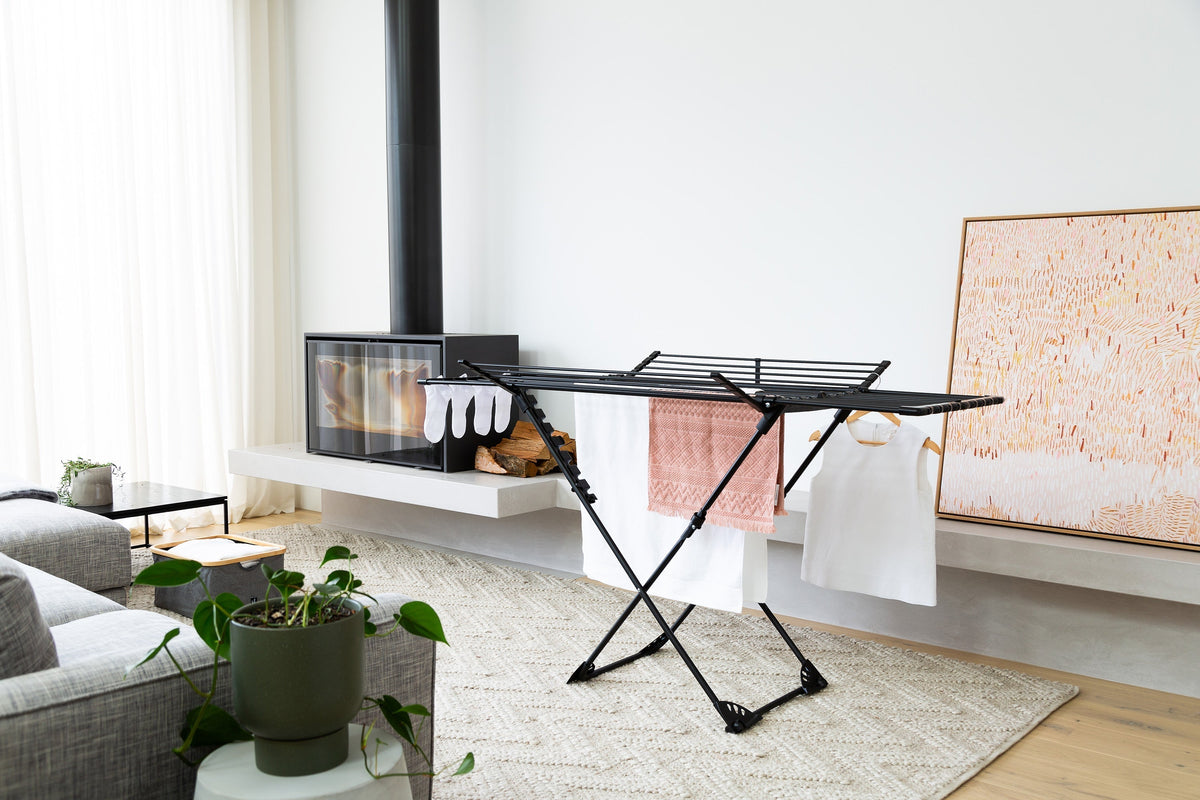How to Dry Clothes Faster Indoors During Cold Months
31 May 2025

When winter rolls in and the washing line isn’t an option, drying clothes indoors becomes a necessary part of home life, but often a slow and frustrating one. Wet clothes draped over chairs or heaters can feel like they will take forever to dry, leaving your home feeling damp and musty.
Efficient indoor drying is essential in the colder months, not just for convenience, but for health and safety too. Prolonged dampness can lead to mildew, mould and that unpleasant ‘wet laundry’ smell nobody wants to wear.
Fortunately, with a few smart winter drying tips, you can dry your clothes faster indoors, without the worry of damaging your garments or turning your home into a humidity trap.
Why Clothes Dry Slowly Indoors During Winter
Clothes take longer to dry in winter for a few key reasons:
- Lack of sunlight and airflow – With doors and windows closed, there's little fresh air to circulate.
- Cooler indoor temperatures – Evaporation slows down significantly when it’s cold.
- Higher humidity – The moisture from wet clothes lingers in the air, making it harder for the laundry to dry fully.
Left unchecked, this can create ideal conditions for musty smells, damp patches and even mould growth.
Top Tips for Drying Your Clothes Faster Indoors
Maximise Airflow
Good airflow with proper air circulation is essential to faster drying, especially in winter and during wet days. It helps moisture evaporate and keeps your home fresh.
- Open windows when possible. Even a small gap improves ventilation and reduces indoor humidity.
- Use fans to keep air moving. A simple fan near your airer boosts airflow, speeding up indoor drying and preventing dampness. An extractor fan can also help by removing moist air from the room, reducing the risk of condensation and mould.
- Use a Clothes Airer Smartly
Using a clothes airer wisely can help dry clothes faster indoors, even in cooler months.
- Spread clothes out widely. Give each item space so air can circulate and moisture can escape. Well-spaced, thick drying rails can help to dry more efficiently. The 27m XL H-Frame Airer is an ideal solution.
- Avoid overcrowding. Too many clothes at once can slow down drying, trapping dampness. Hills’ range of Indoor Airers are designed to maximise capacity and drying efficiency.
Strategic Heating
- Place near (but not on) heaters or use a heated airer like the 20m Heated 3 Tier Airer.
- Dehumidifiers and moisture absorbers can also speed up drying. Absodry moisture absorbers are a stylish option for your home.
Spin and Drain Well Before Drying
- An extra spin cycle in the washing machine can help speed up the drying process.
- Wring heavy garments manually. Twist out thick items like towels to get rid of excess moisture.
Choose the Right Room
- Dry clothes in warm and dry rooms with good ventilation.
- Avoid drying clothes in bedrooms to prevent dampness in sleeping spaces.

Winter Drying Mistakes to Avoid
- Don’t dry clothes directly on heaters – It’s a fire risk and can damage fibres.
- Don’t leave wet clothes bunched together – Air can’t circulate, slowing the drying process.
- Don’t ignore ventilation – Poor airflow leads to trapped moisture and potential mould.
Recommended Products for Indoor Drying
- Lightweight, foldable indoor clothes airers – like the 26m Deluxe 2 Tier Airer make clothes drying a breeze on those rainy days.
- Heated airers – Great for quicker drying in cold and wet weather.
- Dehumidifiers – An effective add-on to reduce indoor humidity and help you dry clothes faster indoors.
Explore more Hills Home’s indoor airers →
Extra Winter Drying Tips for Large Families
- Plan ahead – Stagger loads across the week to allow enough drying time.
- Use multiple airers – Two efficient ones are better than an overloaded drying rack.
- Layer smartly – Place heavy items on the outer edges for better airflow. Use airers like the 27m Extendable Airer with drop-down arms for unobstructed drying, or try a portable clothesline for larger items like sheets.
Conclusion
Drying clothes indoors during winter doesn’t have to be a constant struggle. With the right approach using better airflow, smart heating, and a quality clothes airer, you can keep your laundry routine running smoothly, even on the wettest of days.
These simple winter drying tips will help you avoid damp smells, reduce drying times, and protect your home environment. Whether you’re drying everyday basics or bulky items, there’s a solution that fits your space and lifestyle.
Explore Hills Home’s range of indoor drying solutions and start making your winter laundry routine easier.